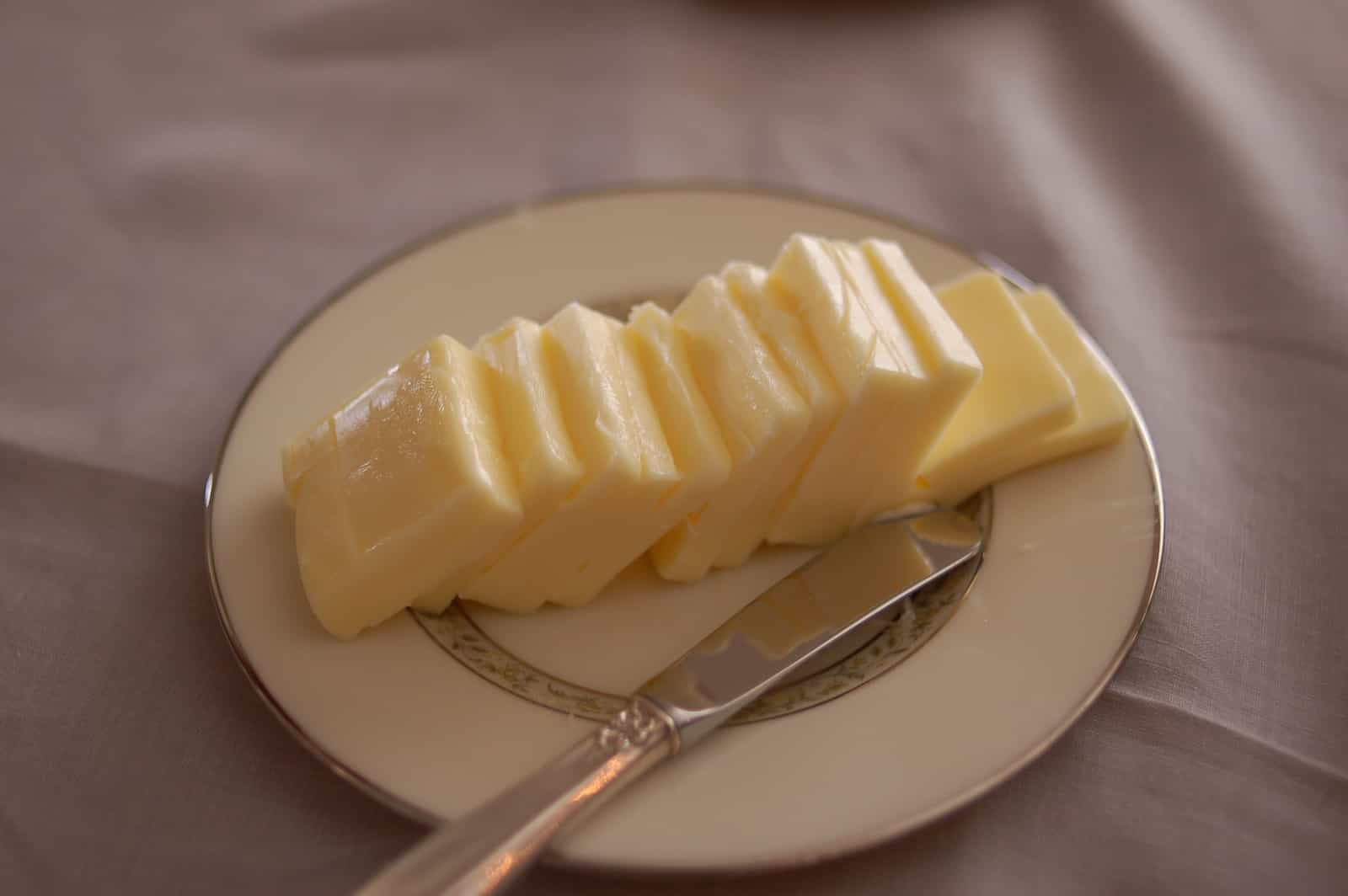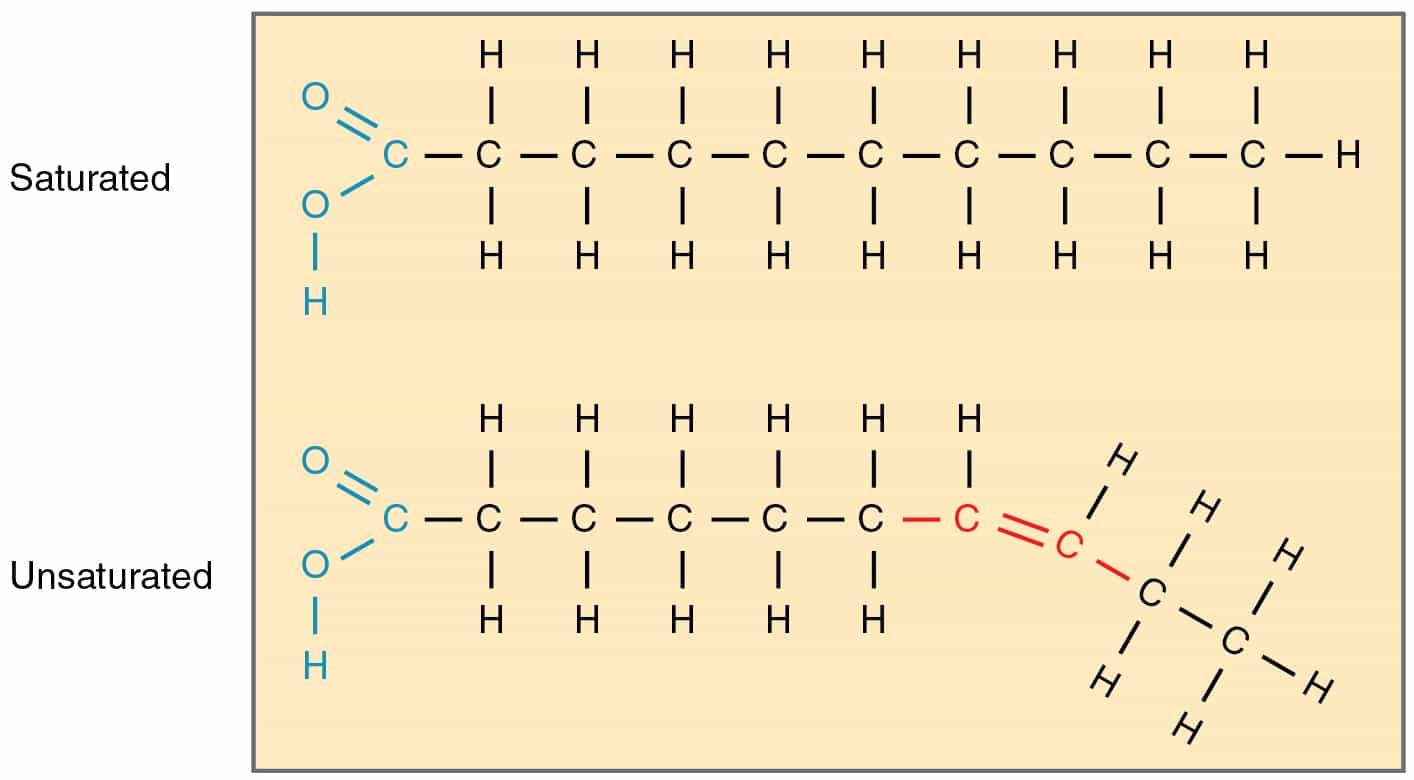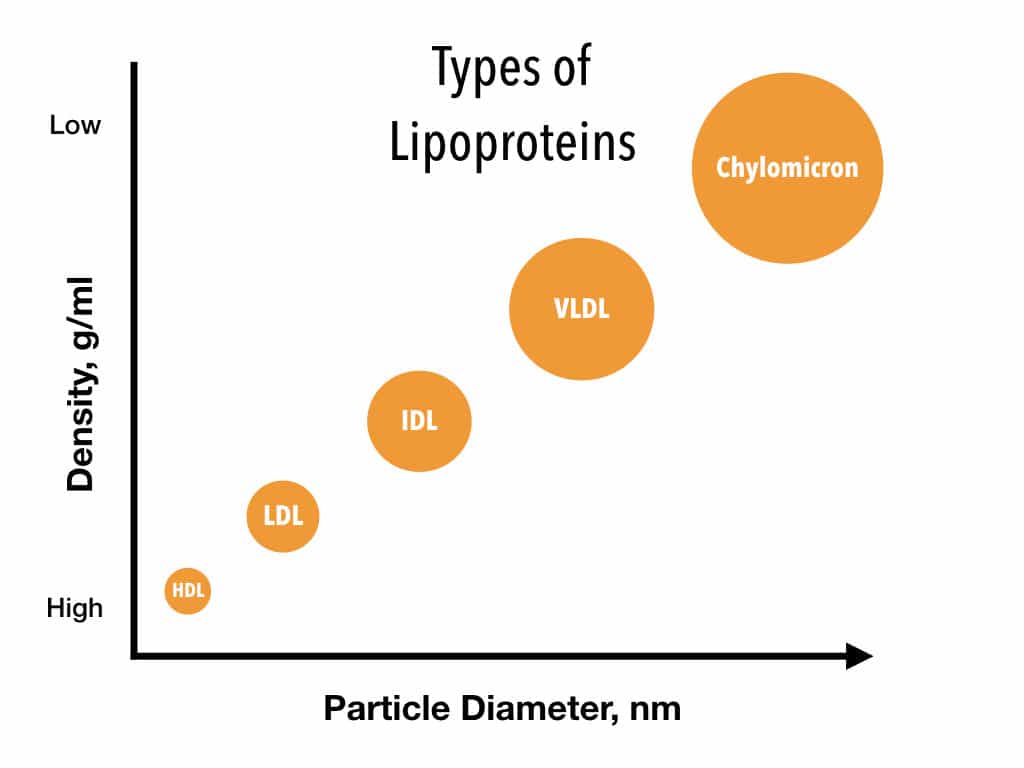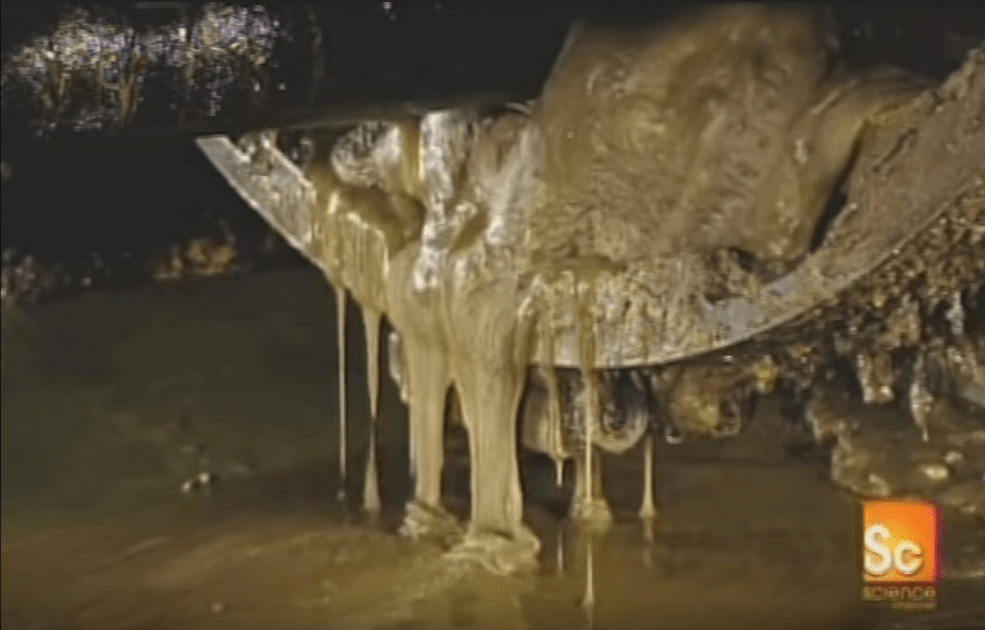Fat
February 8th, 2021
Nature Makes Good Fat. Factories Make Bad Fat.
You have all heard the dietary advice touted by every major “health” organization that saturated fat and cholesterol cause heart disease, obesity, diabetes, and other modern health epidemics. How do we reconcile this claim with the fact that traditional people eating enormous amounts of animal fat, which contain high levels of saturated fat and cholesterol, were (and in some areas of the world still are) in excellent health? Could it be true that food which has nourished us for many thousands of years, producing a state of almost unbelievable (to modern people) health, could be to blame for the modern health problems?
Lipids
Lipid is the term used to describe both fats (lipids that are solid at room temperature) and oils (lipids that are liquid at room temperature). One commonly discussed, useful method for grouping lipids together is by the “saturation” of Carbon bonds. Lipids are essentially chains of Carbon atoms, plus Oxygen and Hydrogen, bound together by either a double bond or a single bond. Without getting into the specifics, know that double bonds are much weaker and require less energy to break. Single bonds are strong, hearty, and it takes a ton of energy to break them. If a lipid has all of its Carbon atoms bound together with single (strong) bonds, it is said to be “saturated”. If a lipid has all single bonds, but one double (weak) bond, it is said to be “monounsaturated”. If a lipid has more than one double Carbon bond, it is “polyunsaturated”.

Oxidation Reduction reactions were covered in an earlier post, but only in the general sense of transfer of electrons. The transfer of Oxygen or Hydrogen is also considered an oxidative reaction. When Oxygen binds to a molecule, that molecule has been oxidized. These reactions can occur due to contact with another molecule with the right properties or excessive energy, often in the form of heat. Oxidation occurs in a controlled manner for many healthy bodily processes, but when it gets out of control it can cause major problems.
Free Radicals are reducing agents, meaning they cause oxidative reactions. When left unchecked, free radicals restructure almost every molecule they interact with, turning functioning molecules into dysfunctional or toxic molecules. Even worse, free radicals can turn other healthy molecules into free radicals, causing what is called a Free Radical Cascade. This cascade of oxidative damage destroys healthy tissue, organs, and whole organ systems, leading to disease.
For the purposes of cooking, we want to pick the kinds of fats that can take heat. On that count, saturated fats (present in butter, coconut oil, lard, and traditional fats) win hands down. Why? Because they can resist a kind of heat-related damage called oxidation. Thanks to their shape, saturated fats have no room for oxygen to squeeze in, and even high heat can’t force these tough molecules to be more accommodating. Monounsaturated fats have room for just one oxygen molecule to sneak in. But it’s not easy, so monounsaturated fat-rich olive oil resists the harmful oxygen-induced molecular rearrangements and is still okay to cook with. Polyunsaturated fat — now that’s another story. Polyunsaturated fat has two places where oxygen can chemically react, which makes oxygen not twice as likely to bind with the fat molecule, but billions of times more likely.
- Dr. Catherine Shanahan
Oxidized Fats are Free Radicals. Read that sentence again, and then again. Burn this concept into your mind, as this reaction is likely the greatest cause of the modern degeneration of health.
Cholesterol
Few natural biological compounds have been both misunderstood by the general population and maligned so viciously by the modern system as cholesterol. Let’s cover the Lipid Cycle now to understand the crucial importance of cholesterol in our body, and how this process can go wrong.
Cholesterol is a type of lipid found in the cell membrane of every cell in our body, serves as the basis for the production of sex hormones, becomes activated and turns into Vitamin D in the presence of Ultraviolet light, and is required to produce bile which is crucial for digestion. It is so critical that your liver produces the vast majority of the cholesterol in your body, regardless of your dietary intake.
When people talk about “cholesterol levels” though, they are not actually talking about cholesterol. They are talking about Lipoproteins, which are the essential particle in the Lipid Cycle that transfer lipids throughout the body. They are composed of two parts. The Lipid Core contains fats, cholesterol, fat soluble vitamins, and various other nutrients. The Apoprotein Coat is the outer shell which contains many signaling protein molecules that store information such as the lipoprotein’s origin and contents.

The Lipid Cycle goes something like this:
- Lipids are digested from food or pulled from adipose tissue (fat stored in your body).
- These lipids are packaged into lipoproteins mostly by the intestines and the liver. Here, the lipoproteins are “tagged” with specific proteins that denote the contents of the package, similar to a barcode.
- The lipoproteins begin their long journey through the bloodstream.
- Cells throughout the body that need certain nutrients will “tag” themselves with specific proteins on their surface. This will grab any lipoprotein that floats by and also has a matching tag, indicating it contains the needed nutrient.
- The lipoprotein will unload part of its contents into that cell, then continue floating through the blood slightly smaller and more dense. We call these Low Density Lipoproteins (LDL) and they are measured in a standard blood lipid panel.
- Eventually, once a lipoprotein has nourished enough cells, it will contain few nutrients and be small and dense. We call these High Density Lipoproteins (HDL) and they are also included in blood panels.
- When an HDL molecule passes through the liver, it will be recognized and pulled in for refueling. The core will be filled with fatty nutrients, and the outer layer will be tagged with the correct signaling proteins.
- Finally, this lipoprotein will be released into the bloodstream to repair and build the body once again.
This amazing process runs beautifully, as long as these signaling proteins remain intact. If this barcode or label is damaged however, this process is interrupted and becomes very dangerous. A lipoprotein with damaged signaling proteins will get lost, floating aimlessly throughout the body, unable to be recognized by the liver or cells that need them. Eventually the apoprotein shell will fracture, spilling the fatty contents directly into the blood where they will build onto the lining of the arteries. Since these damaged lipoproteins never return to the liver, the natural feedback mechanism to regulate the levels of lipoproteins in the blood is thrown off.
The modern system picks up on this disrupted lipid cycle by pointing out the high levels of LDL in the blood. While this is true, high levels of healthy LDL pose no risk. It is these damaged lipoproteins that cause disease. How do these signaling proteins get damaged? Oxidation by Free Radicals!
Vegetable Oil
The historically recent rise in arteriosclerosis and heart disease is the result of an historically recent invention of the food industry — refined, bleached, and deodorized vegetable oils…Over the past century, as butter consumption dropped to less than one quarter of what it was, vegetable oil consumption went up five-fold. In 1900, heart disease was rare… Now, at the dawn of the second millennium, heart disease is the number-one cause of death in both men and women. Natural fat consumption: down. Processed fat consumption: up. Heart disease: up— way up. Forget for a moment what the “experts” are saying, and ask yourself what these trends suggest to your inner statistician. The next time you go to the grocery store, see how many foods you can find that don’t contain vegetable oil as an ingredient.
- Dr. Catherine Shanahan
What is Vegetable Oil exactly, and why is it not natural? To understand this question, let’s first understand how traditional oils are extracted. There are a handful of traditionally prepared oils from seeds such as flax, rapeseed, and hemp. The extraction of these oils involves a small wedge that can be slowly squeezed tighter and tighter over many hours. The oils from these seeds would then drip out, fresh and full of antioxidants (remember Pillar IV!), and filled with many nutrients. These oils were not used for cooking, because traditional people were aware that heat would destroy these fragile foods. Modern scientific research is proving this ancient wisdom true by revealing that seed oils contain high levels of Polyunsaturated Fats, which we now know are extremely sensitive to oxidation by heat.
Now let’s cover the modern production process for Vegetable Oils, which contain the contents extracted from corn, canola, soy, sunflower, cottonseed, safflower, rice bran, and grapeseed (often dubbed the “Hateful Eight”). These eight commonly used seeds hang on tightly to their oils, meaning traditional people did not eat these oils because they could not extract them. With modern technology though, machines are able to add inhuman amounts of pressure while heating them, thereby pulling most of their oils out and oxidizing them in the process. The rest of the oil is removed with an industrial solvent, normally hexane (part of gasoline).

The oil at this stage is so physically revolting in both sight and smell that it must go through at least a dozen more stages of processing to convert it into something that has no flavor, and is thus palatable enough to eat. Remember that natural foods which are healthy taste good. No flavor is a warning signal, where our body is telling us something is off about this food!
One other way to denote oxidized fats, which many have heard of, is Trans Fats. Cis Fats are the usual, healthy fats in their natural state that our body is able to recognize and use. Trans Fats are mutated, oxidized, unnatural fats that wreak havoc on our body. All vegetable oils contain trans fats. Even if the label lists a small amount, remember that oxidized fats cause a Free Radical Cascade. This means that trans fats, over time, will turn other healthy fats into mutant fats both in a bottle and in your body. That Canola Oil label says it only has 1% trans fats, but when it’s tested a month later it may be at 5%. Even a small amount of trans fat is enough to cause serious damage, as these vegetable oils do not contain an appreciable amount of antioxidants to slow this chain reaction of oxidation.
So what fats should you eat? Any fats that our traditional ancestors had access to are always a good choice. Here are the main lipids I make sure to include in my diet:
- Animal Fat (Tallow, Lard, Butter, Ghee) from animals raised traditionally: On a large mineral rich pasture in the sun without any additives. This is the best in terms of nutrient density.
- Extra Virgin Olive Oil. Just be careful not to heat it too much.
- Coconut, Palm, and Avocado Oil
Conclusion
It is more important to remove toxic Industrial Seed Oils, named “Vegetable Oils” (by clever marketing teams trying to trick you into thinking they are equivalent to eating fresh vegetables), from your life than it is to add healthy foods. The integrity of your entire body, especially your brain, depends on the integrity of the fats you put in it. Don’t build yourself with mutant fats. Your health is far too important.
I hope you learned something about fats and make some dietary changes, as Vegetable Oils are definitely not Human Diet approved. There’s nothing better for you than good fats, and there’s nothing worse for you than bad fats. The tricky part is that these fake oils are hidden in almost all processed foods, so your best bet is to prepare your own food from whole ingredients.
If you’re having a hard time believing that your doctor and the health organizations are wrong about fat, I urge you to do your own research on this topic. Here are two studies to get you started: Sydney Diet Heart Study and Minnesota Coronary Experiment. Then, look into the financial and personal connections between the food industry, pharmaceutical industry, and the health organizations. Have fun in this rabbit hole.